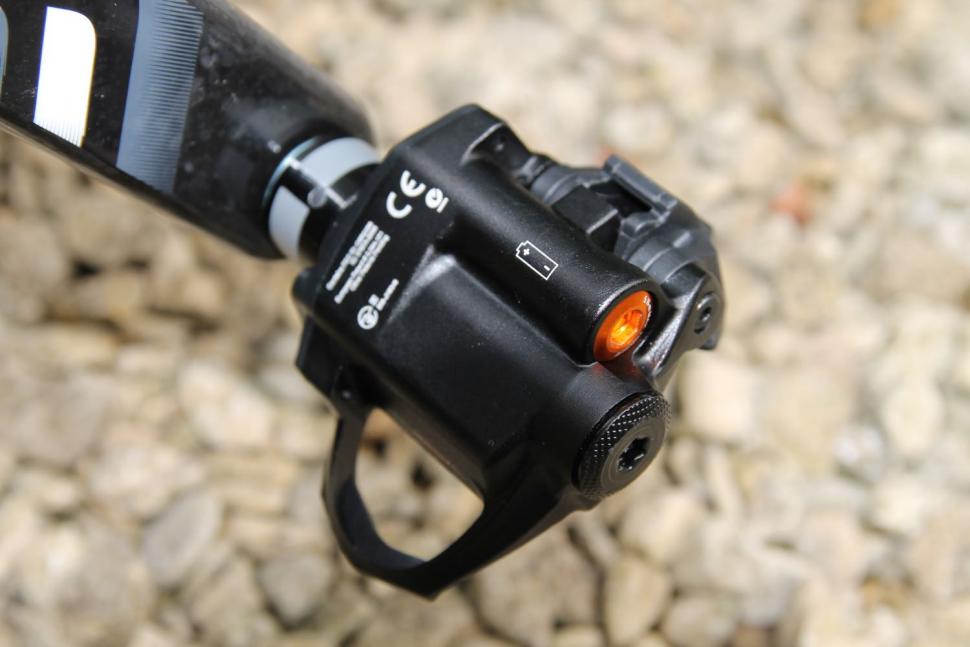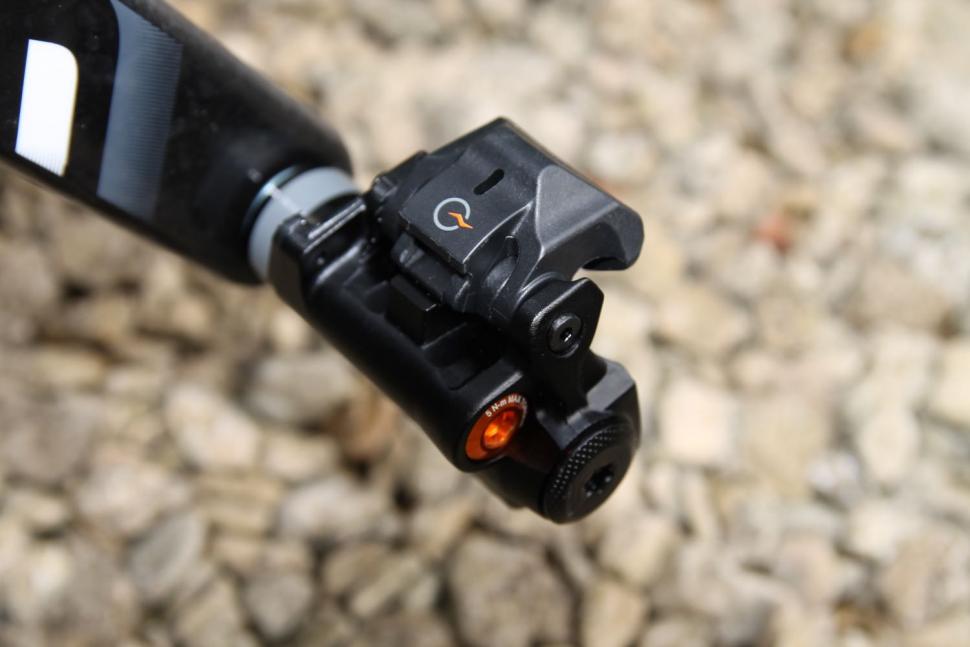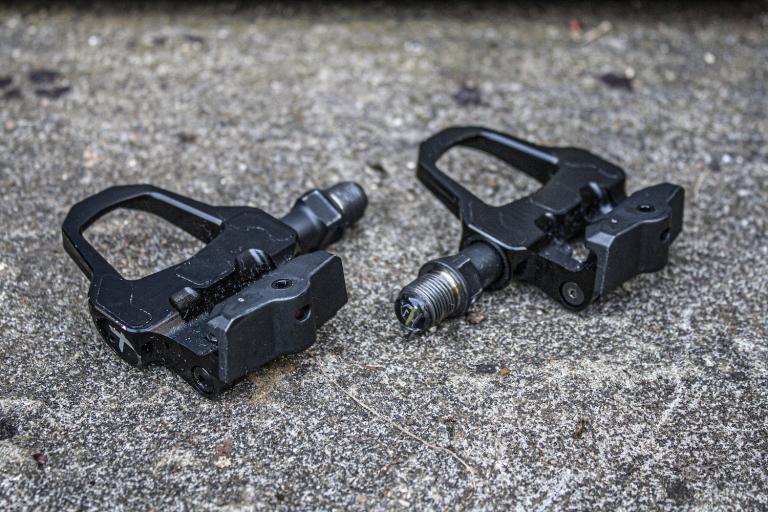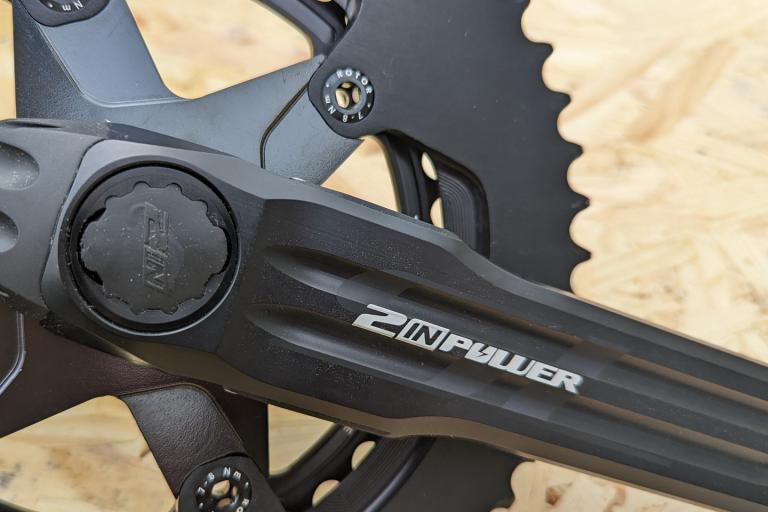- News
- Reviews
- Bikes
- Components
- Bar tape & grips
- Bottom brackets
- Brake & gear cables
- Brake & STI levers
- Brake pads & spares
- Brakes
- Cassettes & freewheels
- Chains
- Chainsets & chainrings
- Derailleurs - front
- Derailleurs - rear
- Forks
- Gear levers & shifters
- Groupsets
- Handlebars & extensions
- Headsets
- Hubs
- Inner tubes
- Pedals
- Quick releases & skewers
- Saddles
- Seatposts
- Stems
- Wheels
- Tyres
- Tubeless valves
- Accessories
- Accessories - misc
- Computer mounts
- Bags
- Bar ends
- Bike bags & cases
- Bottle cages
- Bottles
- Cameras
- Car racks
- Child seats
- Computers
- Glasses
- GPS units
- Helmets
- Lights - front
- Lights - rear
- Lights - sets
- Locks
- Mirrors
- Mudguards
- Racks
- Pumps & CO2 inflators
- Puncture kits
- Reflectives
- Smart watches
- Stands and racks
- Trailers
- Clothing
- Health, fitness and nutrition
- Tools and workshop
- Miscellaneous
- Buyers Guides
- Features
- Forum
- Recommends
- Podcast
review
£999.00
VERDICT:
Easy to fit and easy to use power meter pedals that provide consistent power measurement
Weight:
417g
Contact:
At road.cc every product is thoroughly tested for as long as it takes to get a proper insight into how well it works. Our reviewers are experienced cyclists that we trust to be objective. While we strive to ensure that opinions expressed are backed up by facts, reviews are by their nature an informed opinion, not a definitive verdict. We don't intentionally try to break anything (except locks) but we do try to look for weak points in any design. The overall score is not just an average of the other scores: it reflects both a product's function and value – with value determined by how a product compares with items of similar spec, quality, and price.
What the road.cc scores meanGood scores are more common than bad, because fortunately good products are more common than bad.
- Exceptional
- Excellent
- Very Good
- Good
- Quite good
- Average
- Not so good
- Poor
- Bad
- Appalling
PowerTap's P1 pedals are simple to install, easy to use and provide consistent power measurement. The only snag is the price tag, but if you're serious about your riding, this is one of the best power meters currently available.
The power meter market has exploded in recent years, with more choice and tumbling prices – relatively speaking. Previously, your choice for measuring power was either an SRM crank-based power meter, or PowerTap's hub-based system. Both had their pros and cons: the SRM expensive, the PowerTap limiting wheel choice.
That's all changed now, with many more methods for measuring power, but to my mind the most interesting is the pedal-based system. PowerTap, one of the longest-running specialists in power measurement, launched its P1 power pedals earlier this year.
Find your nearest dealer here
Buy these online here
Installation and use
Installation couldn't be any simpler really. You fit them just like normal pedals, using an 8mm Allen key. There are no pedal flats. No special tools or torque wrenches required. Just line up the threads, tighten them up, pair with a compatible device and you are good to ride.
I've had no problems switching the pedals between different bikes. I've done it many dozens of times and it's no more trouble than a regular set of pedals. This makes them ideal if you have both a race bike and a training bike, for example.
PowerTap supplies its own cleats, which use a regular three-bolt drilling, and the pedals are compatible with Look Keo-style cleats. This isn't something I've tried, but I know people who have, with no issues.
Out on the road, the pedals work very well. In terms of engagement, disengagement and stability, they're great, with a generous amount of float. PowerTap has ensured the pedals can stand up to plenty of abuse, and says it has tested them to extremes, from under water to high weight loads, and it's confident they can cope with whatever the most demanding cyclist can throw their way. To increase longevity, the metal plate on top of the pedal is replaceable.
They do attract some rather unfair criticism for their appearance. They're certainly not as elegant as my usual Speedplays, but when you're cycling, you can't see them anyway, so what does it matter?
They might look on the chunky side, but I didn't experience any issues with the pedals contacting the road, even during my best efforts to bank the bike over through some tight corners.
The pedal body owes its bulky appearance to the critical electronics packaged inside it rather than as a separate pod, as with other systems, along with the AAA battery inside each pedal. PowerTap claims 60 hours of battery life and that has proved about right during my testing. Changing a battery is a doddle, too. The pedals aren't particularly light when compared with a standard pedal, and they're heavier than Garmin's Vector 2s (417g versus 356g.)
The pedals use ANT+ and Bluetooth Smart to communicate to a compatible computer head unit, such as PowerTap's own Joule GPS or a suitable Garmin Edge computer. I had good results using both computers with the pedals, with no problems with pairing throughout the test period.
With Bluetooth the Joule GPS computer can be paired with the company's dedicated app (available for free download) on a compatible smartphone, and provides a really easy way to analyse your activity without going near a computer or having to search the house for a USB cable. Once your activity is in the app, there is a wealth of data to scrutinise, and you can share it to most of the popular training websites, like Strava.
The pedals are calibrated at PowerTap's US manufacturing facility. One small thing you have to do before every ride is calibrate the pedals, resetting the zero offset to ensure maximum accuracy. On a Garmin this is easy because when you wake the pedals, with a couple of rotations of the cranks, the computer prompts you to calibrate. You need to do this with no load on the pedals, so I made it part of my ride preparation drill and it's not a problem at all.
All about the data
So, the big question is, do they work? They certainly do. I've been riding the P1 pedals for a couple of months now; I've raced them and ridden them in the heat and in the cold, in the rain and even in the mud. Throughout this testing, the power data has been consistent at all times, with no odd readings or random spikes.
It's tricky to test power meters against a benchmark because what do you use as a benchmark? PowerTap claims that the pedals are accurate to within 1-1.5% of its hub meters. So I did just that, and rode with the pedals alongside a Powertap wheel to see how they compared. The result? The readings from both were extremely close, with both power meters tracking similarly through the peaks and troughs of a typical ride.
Importantly, the power data has been consistent from ride to ride, and from week to week. I've been using them on all my regular training loops, and comparing data on these same routes from different days, and the consistency is plain to see.
A temperature sensor allows the pedals to compensate for temperatures changes, and I've used them in the heat of Spain and Italy and the cold of Belgium and England, with no discernible impact on the power measurement. That's the most important thing with a power meter: reliable power data so you can see the improvements you're making in training.
>> Check out our guide to choosing a power meter here
As well as the advantages of easy installation and free crank and wheel choice that a power pedal offers, there's the power measurement that is available with two separate devices. At the moment, the PowerTap software doesn't fully exploit this in the same way that Garmin's Power Phase and Cleat Offset does. Obviously you can do left and right leg analysis and see if there are any discrepancies between your legs, and at first it's fascinating to see how your two legs operate, but the novelty soon wanes.
Being able to identify and analyse the pedal stroke in detail, to see where you're applying the most power and to use that data to improve the efficiency of your pedalling, is one of the most appealing potential features of a power meter pedal. But you don't currently get this level of analysis with the PowerTap pedals, which gives the Garmins the upper hand. Perhaps PowerTap will narrow this gap soon, because the hardware is certainly capable.
Conclusion
PowerTap has clearly brought its vast expertise in power measurement to a product that is easy to use and reliable, with consistent power measurement. Battery life is good, as is durability, and syncing with a compatible computer is a doddle. Some of the more complex training tools have yet to be exploited, but it's only a matter of time, hopefully.
For most people wanting a reliable power meter, the PowerTap P1 pedals are worth considering. They're cheaper than the Garmin Vector 2 pedals, but power-data-hungry cyclists will miss the extra level of analysis offered by the Garmins.
The P1 pedals are manufactured in PowerTap's facility in Wisconsin, USA, and come with a two-year warranty.
Verdict
Easy to fit and easy to use power meter pedals that provide consistent power measurement
road.cc test report
Make and model: Powertap P1 Power Pedals
Size tested: n/a
Tell us what the product is for, and who it's aimed at. What do the manufacturers say about it? How does that compare to your own feelings about it?
Powertap says: "The P1 pedal is a simple, intelligent and uncompromising design that provides the same proven PowerTap accuracy and reliability. The simple one-piece design easily mounts to any crank and does not require calibration nor installation angle setting, providing a true 'plug-and-play' experience. The P1 also features dual band ANT+ and Bluetooth SMART for compatibility with a multitude of head units and smart devices. Plus, the independent measurement opens the possibility for a new set of pedaling metrics previously unavailable to help give you the ultimate competitive edge."
Tell us some more about the technical aspects of the product?
Weight: 398 grams
Thread Type: 9/16"
Cleat Interface: 3 bolt
Cleat: Red, 6 degree floating
Spring Type: Adjustable Elastomer
Proven PowerTap accuracy
Release Tension: 6-20 Nm
Stack Height: 14mm
Center of Pedal: 53mm (measured from crank to pedal)
Lean Angle: 25.5 degrees (based on 175mm crank length, 75mm BB drop and 147mm Q-Factor crank)
Firmware Updates: Over the air
Connectivity: ANT+ and Bluetooth SMART
Battery: AAA
Battery Life: 60 hours
Rate the product for quality of construction:
8/10
They're bulky in appearance, but the chunky design is very robust.
Rate the product for performance:
8/10
Excellent and consistent power measurement, and easy to install the pedals and pair with a compatible head unit. Lack of detailed pedal stroke analysis is a missed opportunity, hopefully there'll be an update soon.
Rate the product for durability:
9/10
No problems here, very durable and reliable.
Rate the product for weight, if applicable:
5/10
Heavier than the Garmin Vector 2 pedals and much heavier than regular pedals.
Rate the product for comfort, if applicable:
8/10
The cleats offer a good range of float.
Rate the product for value:
7/10
They're certainly not cheap, and there are more affordable power meters available, but few of those options are power meter pedals. It comes down to what you want from your power meter.
Tell us how the product performed overall when used for its designed purpose
The consistent power measurement, along with durability and easy installation, make living with the P1 pedals a delight.
Tell us what you particularly liked about the product
The lack of more extensive power measuring tools for analysing pedal stroke efficiency.
Tell us what you particularly disliked about the product
Bulky appearance and heavy.
Did you enjoy using the product? Yes
Would you consider buying the product? Yes
Would you recommend the product to a friend? Yes
Use this box to explain your score
Really easy to use and reliable, and cheaper than the similar Garmin Vector 2 pedals, but those do offer a high level of power data detail and are lighter.
About the tester
Age: 31 Height: 180cm Weight: 67kg
I usually ride: My best bike is:
I've been riding for: 10-20 years I ride: Every day I would class myself as: Expert
I regularly do the following types of riding: road racing, time trialling, cyclo-cross, commuting, touring, mountain biking
David worked on the road.cc tech team from 2012-2020. Previously he was editor of Bikemagic.com and before that staff writer at RCUK. He's a seasoned cyclist of all disciplines, from road to mountain biking, touring to cyclo-cross, he only wishes he had time to ride them all. He's mildly competitive, though he'll never admit it, and is a frequent road racer but is too lazy to do really well. He currently resides in the Cotswolds, and you can now find him over on his own YouTube channel David Arthur - Just Ride Bikes.
Latest Comments
- ColinWatters 42 min 15 sec ago
As I recall the power transmitted by a pulley or chain drive depends on the difference in tension between the two sides of the chain or belt....
- mctrials23 53 min 37 sec ago
"As a cyclist myself..."...
- chrisonabike 56 min 15 sec ago
Well, you could get a rusty omafiets (would you be happy for it to weight slightly more than double, assuming you've a fairly heavy road bike)? Or...
- chrisonabike 1 hour 3 min ago
Well, law isn't engineering......
- jaymack 1 hour 40 min ago
We must be related!
- The_Ewan 3 hours 10 min ago
But why worry if a few people do? It's just not a big deal....
- Tom_77 4 hours 14 min ago
Tempted to get him a sweary birthday cake like in The Thick Of It....
- Bigtwin 4 hours 42 min ago
Didn't happen did it? They came into my shop a couple of years back and said it was "on the way", but never heard anything more.
- Steve K 5 hours 15 min ago
Very parochially, I've still not forgiven Pearson's for abandoning their roots by leaving Sutton.
- Gd29 5 hours 23 min ago
Warner Bros makes 8 year term agreement... withdraws after 4 taking the whole thing down....















Add new comment
5 comments
Head's up, the pedals are NOT compatible with Look style cleats. The dimensions are close, so brand new Look Keo cleats will apparently work, but once they start wearing you'll run into problems keeping your feet in the pedals. PowerTap specifically says they are not compatible in the manual.
https://www.powertap.com/Uploads/PDF/PowerTap-Manuals/powertap-user-guid...
Has anyone tried using the Powertap cleats with Keo pedals? Pedal based system is a win for swapping between 2 bikes, which you won't want to do for every ride, so shoes/cleats need to work with either bike. I was hoping you'd fit Keo pedals to one of the bikes and you're always good to go. If anyone has experience, holler
Doesn't DCRainmaker do such tests?
/deleted
How about using the other power solutions on the bike at the same time?
You could have a PowerTap hub, a Stages crank, Garmin Vector or Powertap P1 pedals, and a Pioneer chainset meter, all running at the same time.
You might need 4 different Garmin/ANT+ head units to record from each one, but wouldn't it be interesting to see how each solution reports power from the same ride?
In the name of science, this must be done.